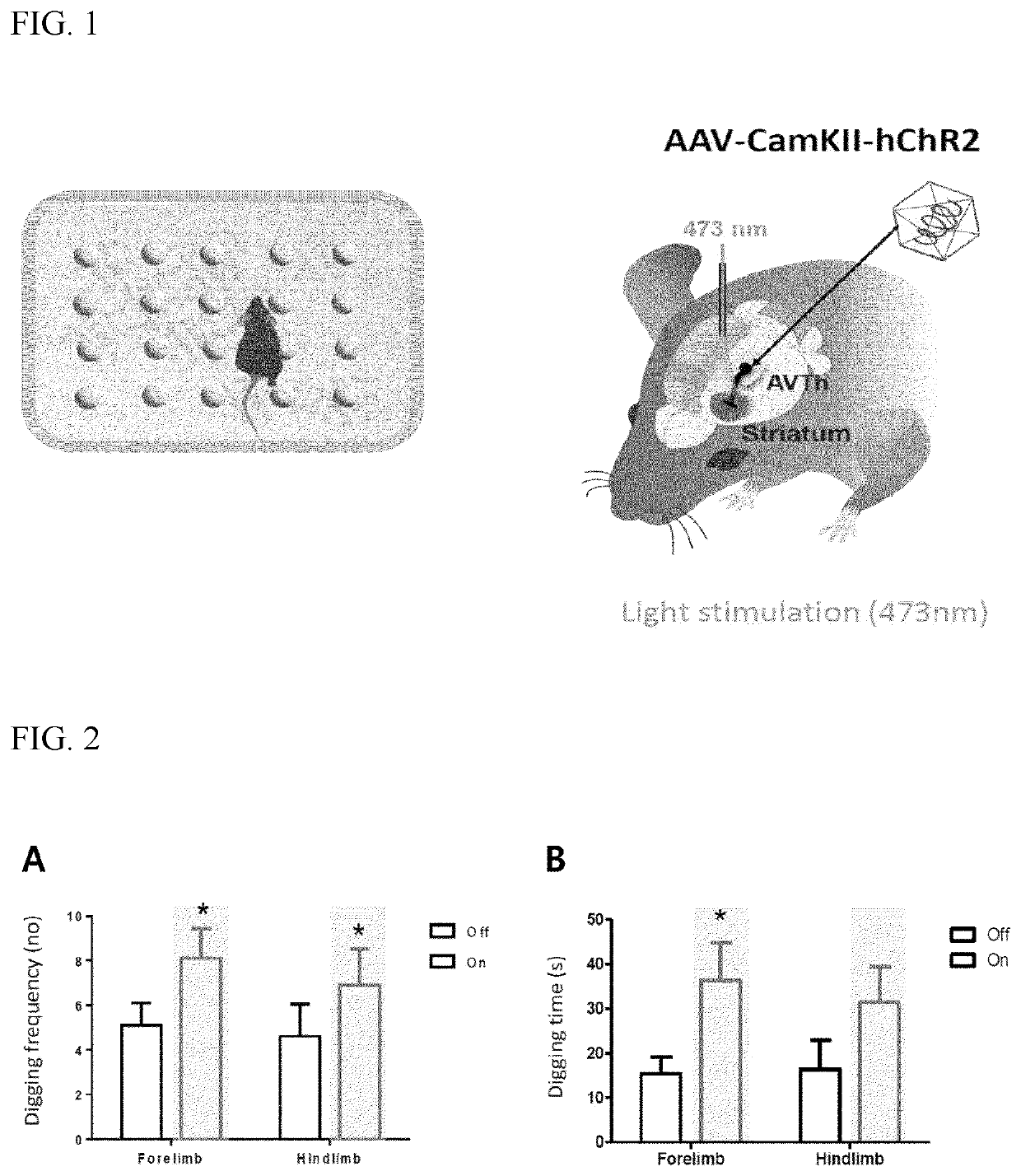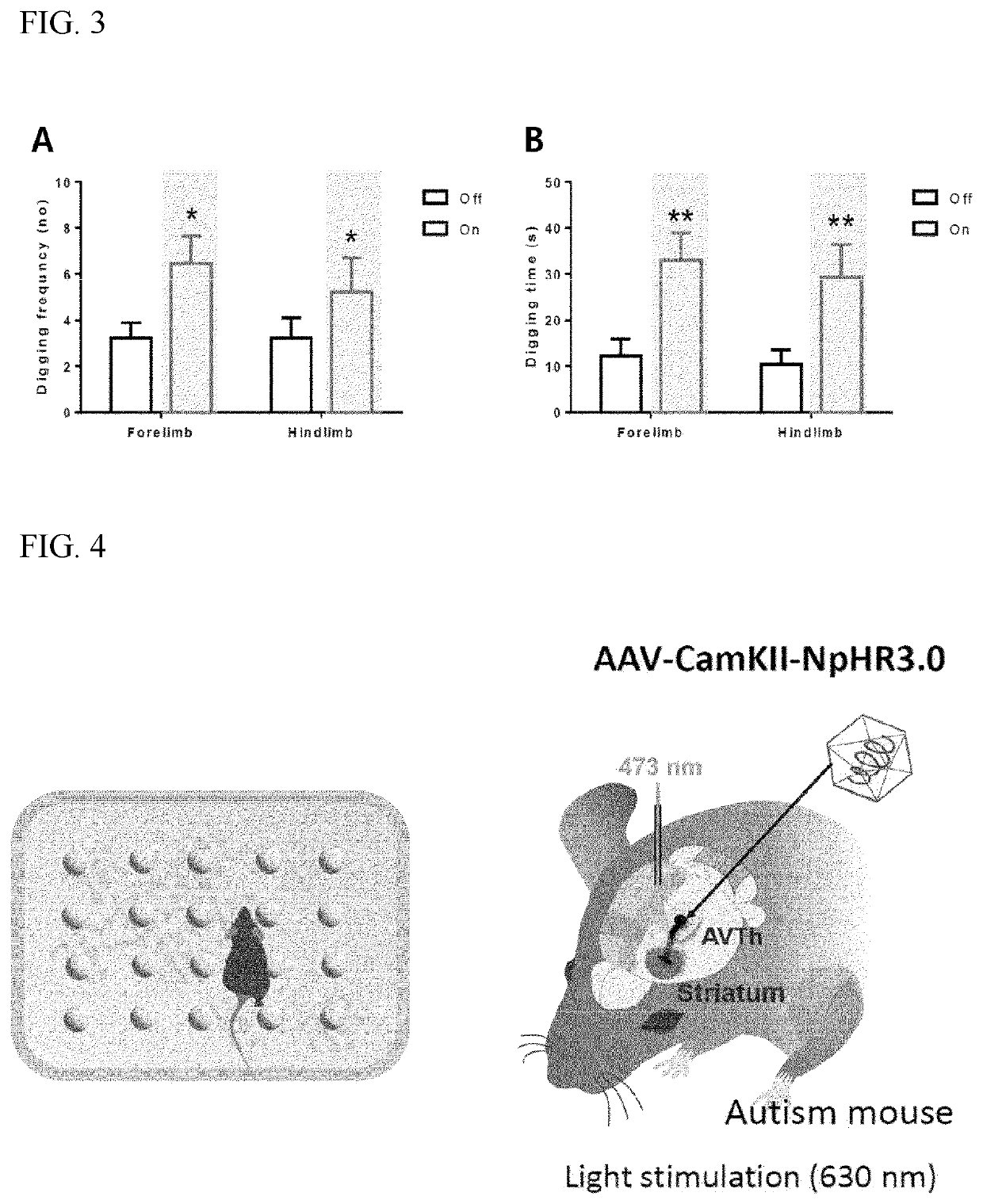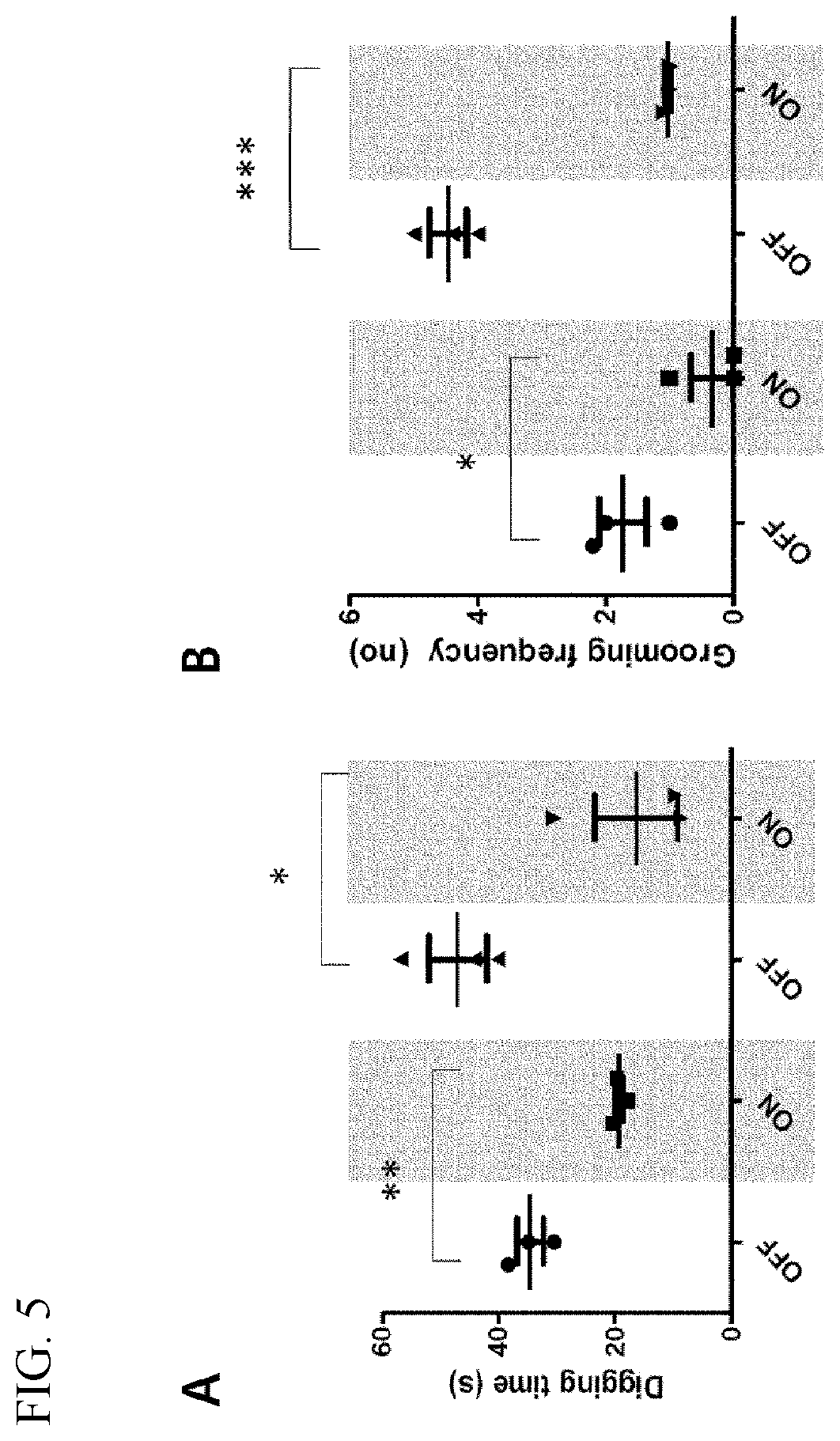Method for treatment of autism spectrum disorder, mouse for monitoring autism spectrum disorder, and method for screening candidate material for prevention or treatment of autism spectrum disorder
- Summary
- Abstract
- Description
- Claims
- Application Information
AI Technical Summary
Benefits of technology
Problems solved by technology
Method used
Image
Examples
examples
Generation of WT Mice in which Channelrhodopsin (hChR2) has been Expressed
[0079]WT mice (C57BL / 6J) over 5 weeks old were used. Animal care and handling was performed according to the guidelines of the Animal Care and Use Committee of the Korea Institute of Science and Technology (KIST, Korea). Next, neurons of the ventrolateral thalamus (VL) or laterodorsal thalamus (LD) of each mouse were infected with an adeno-associated virus (AAV) vector carrying the channelrhodopsin-2 (hChR2) gene under the control of the CamKII promoter (FIG. 1).
[0080]The hChR2 are involved in light-activated cation channels. For use as the AAV vector, AAV-CamKII-Cre virus and AAV2 / 1-EF1α-DIO-hChR2 (H134R)-mCherry-WPRE (titer: 5.36×1012 gc / ml; Vector Core Facility at the University of Pennsylvania, USA) were mixed at a ratio of 1:1. For virus injection, all mice were anesthetized with avertin (20 mg / ml of tribromoethanol, 20 μl / g i.p.) and placed in a stereotaxic apparatus (David Kopf Instruments, USA). All t...
experimental examples
Confirmation of Induction of Autism Animal Model from WT Mice through Stimulation of Striatum with Blue Light
[0086]Light stimulation was used to confirm that the autism animal model was induced from the channelrhodopsin-expressing WT mice according to Example 1 of the present invention.
[0087]The axons of neurons of each of the VL and the LD were photostimulated by irradiating blue light at 473 nm to the core region of the striatum of the channelrhodopsin-expressing mouse. For optogenetic stimulation experiments, 473 nm light was provided by a diode-pumped solid-state laser (CrystaLaser, USA) controlled by a pulse generator (Agilent, USA). After stimulation with blue light, the digging frequency and the digging time for the mouse were calculated, and the results are shown in FIGS. 2 and 3.
[0088]As shown in FIG. 2, it was confirmed that, when the light was transmitted to the ventrolateral thalamus (VL) region in the channelrhodopsin-expressing mouse according to Experimental Example ...
PUM
| Property | Measurement | Unit |
|---|---|---|
| Wavelength | aaaaa | aaaaa |
| Disorder | aaaaa | aaaaa |
Abstract
Description
Claims
Application Information
 Login to View More
Login to View More - R&D
- Intellectual Property
- Life Sciences
- Materials
- Tech Scout
- Unparalleled Data Quality
- Higher Quality Content
- 60% Fewer Hallucinations
Browse by: Latest US Patents, China's latest patents, Technical Efficacy Thesaurus, Application Domain, Technology Topic, Popular Technical Reports.
© 2025 PatSnap. All rights reserved.Legal|Privacy policy|Modern Slavery Act Transparency Statement|Sitemap|About US| Contact US: help@patsnap.com



